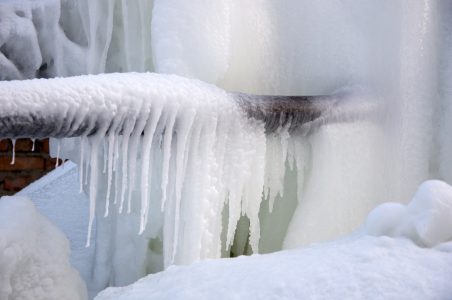They are making a number of great observations on the subject of Prevent Frozen Pipes in general in this content following next.

Winter can wreak havoc on your pipes, especially by freezing pipes. Right here's just how to avoid it from happening and what to do if it does.
Intro
As temperatures decrease, the risk of icy pipelines increases, possibly bring about expensive repairs and water damage. Recognizing just how to stop icy pipes is vital for house owners in cool environments.
Recognizing Icy Pipes
What triggers pipelines to ice up?
Pipes freeze when exposed to temperature levels listed below 32 ° F (0 ° C) for extended durations. As water inside the pipelines freezes, it increases, putting pressure on the pipe wall surfaces and potentially creating them to rupture.
Risks and problems
Frozen pipelines can cause supply of water disruptions, property damages, and expensive repair services. Ruptured pipes can flooding homes and cause substantial architectural damage.
Indications of Frozen Piping
Identifying icy pipelines early can prevent them from bursting.
Just how to determine frozen pipelines
Look for decreased water circulation from faucets, uncommon odors or sounds from pipelines, and noticeable frost on subjected pipelines.
Prevention Tips
Protecting prone pipes
Cover pipes in insulation sleeves or make use of warm tape to secure them from freezing temperatures. Focus on pipes in unheated or outside areas of the home.
Heating strategies
Keep indoor spaces adequately heated, especially locations with pipes. Open up cupboard doors to permit warm air to flow around pipelines under sinks.
Protecting Outdoor Plumbing
Garden hose pipes and outdoor faucets
Disconnect and drain yard hose pipes before winter. Mount frost-proof spigots or cover exterior faucets with shielded caps.
What to Do If Your Pipes Freeze
Immediate activities to take
If you think icy pipes, maintain taps available to alleviate stress as the ice melts. Utilize a hairdryer or towels taken in hot water to thaw pipes gradually.
Long-Term Solutions
Architectural adjustments
Take into consideration rerouting pipelines away from outside wall surfaces or unheated areas. Add additional insulation to attic rooms, cellars, and crawl spaces.
Updating insulation
Invest in premium insulation for pipelines, attic rooms, and wall surfaces. Correct insulation aids keep regular temperatures and reduces the danger of icy pipelines.
Final thought
Stopping frozen pipelines calls for aggressive procedures and quick reactions. By understanding the causes, indications, and safety nets, home owners can safeguard their plumbing during winter.
5 Ways to Prevent Frozen Pipes
Drain Outdoor Faucets and Disconnect Hoses
First, close the shut-off valve that controls the flow of water in the pipe to your outdoor faucet. Then, head outside to disconnect and drain your hose and open the outdoor faucet to allow the water to completely drain out of the line. Turn off the faucet when done. Finally, head back to the shut-off valve and drain the remaining water inside the pipe into a bucket or container. Additionally, if you have a home irrigation system, you should consider hiring an expert to clear the system of water each year.
Insulate Pipes
One of the best and most cost-effective methods for preventing frozen water pipes is to wrap your pipes with insulation. This is especially important for areas in your home that aren’t exposed to heat, such as an attic. We suggest using foam sleeves, which can typically be found at your local hardware store.
Keep Heat Running at 65
Your pipes are located inside your walls, and the temperature there is much colder than the rest of the house. To prevent your pipes from freezing, The Insurance Information Institute suggests that you keep your home heated to at least 65 degrees, even when traveling. You may want to invest in smart devices that can keep an eye on the temperature in your home while you’re away.
Leave Water Dripping
Moving water — even a small trickle — can prevent ice from forming inside your pipes. When freezing temps are imminent, start a drip of water from all faucets that serve exposed pipes. Leaving a few faucets running will also help relieve pressure inside the pipes and help prevent a rupture if the water inside freezes.
Open Cupboard Doors
Warm your kitchen and bathroom pipes by opening cupboards and vanities. You should also leave your interior doors ajar to help warm air circulate evenly throughout your home.

Do you enjoy reading about How To Avoid Freezing Pipes? Make a remark below. We will be pleased to see your views about this write up. Hoping to see you back again before long. Sharing is caring. Helping people is fun. Thanks for taking the time to read it.
Course Detail